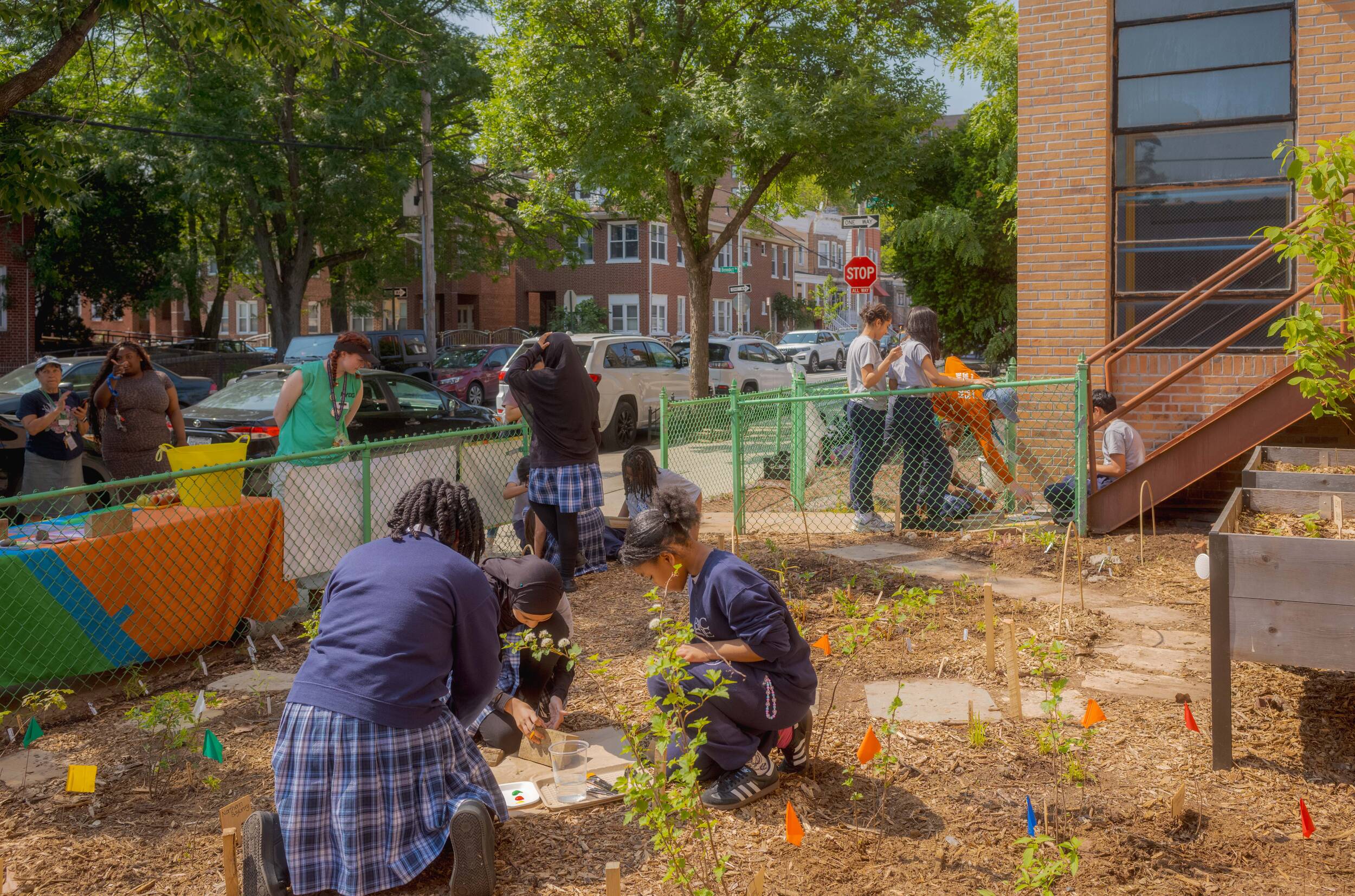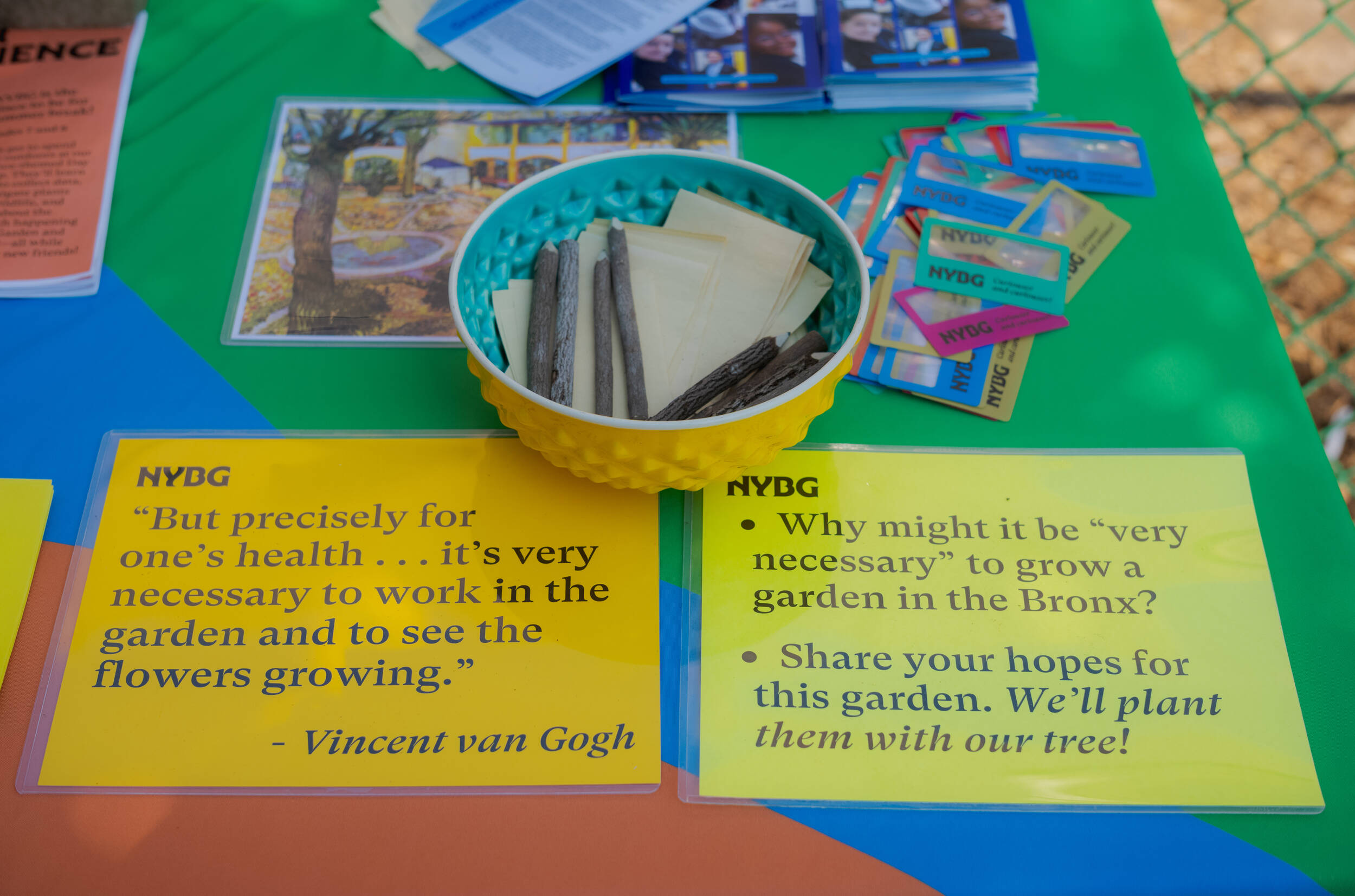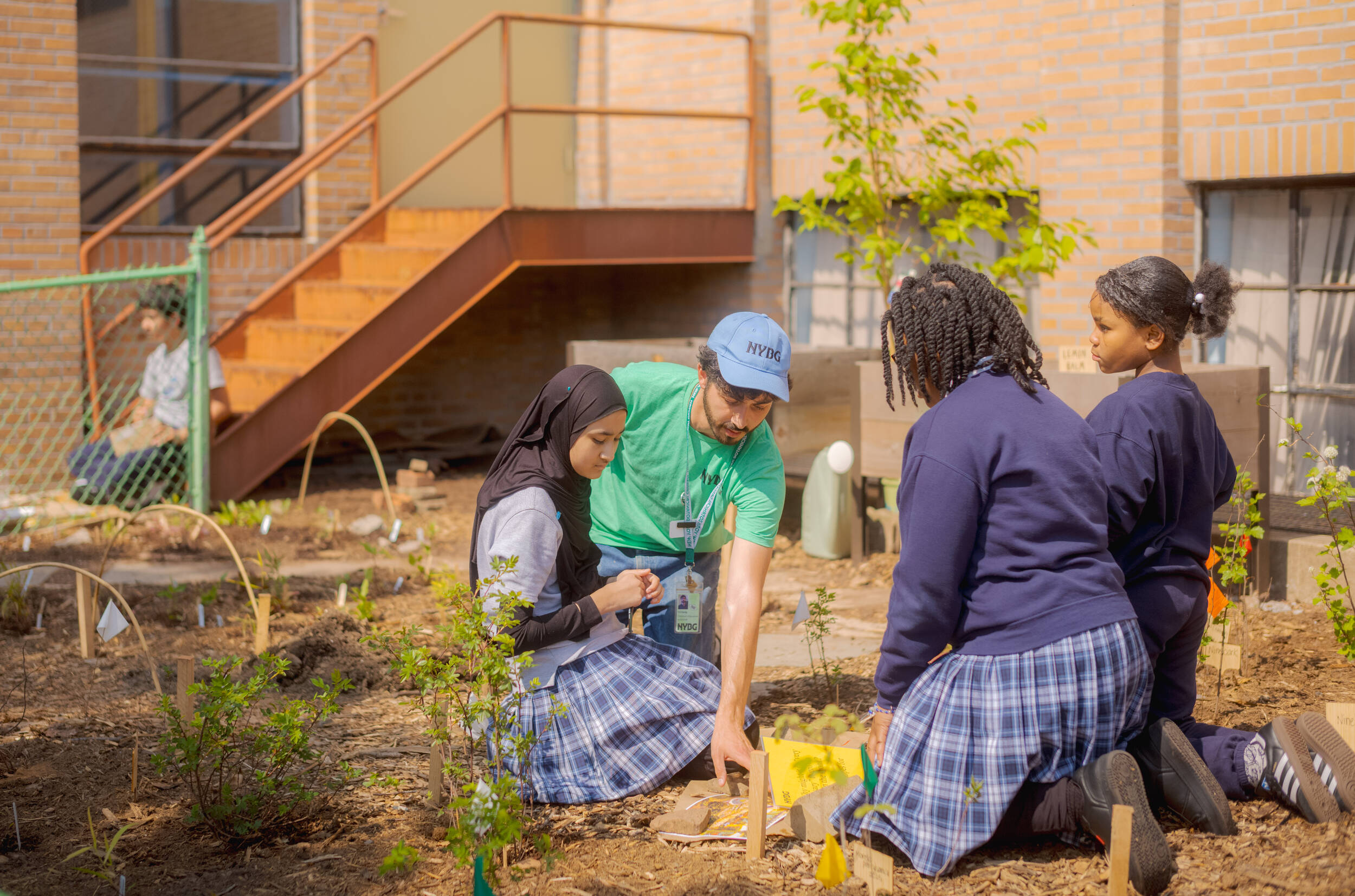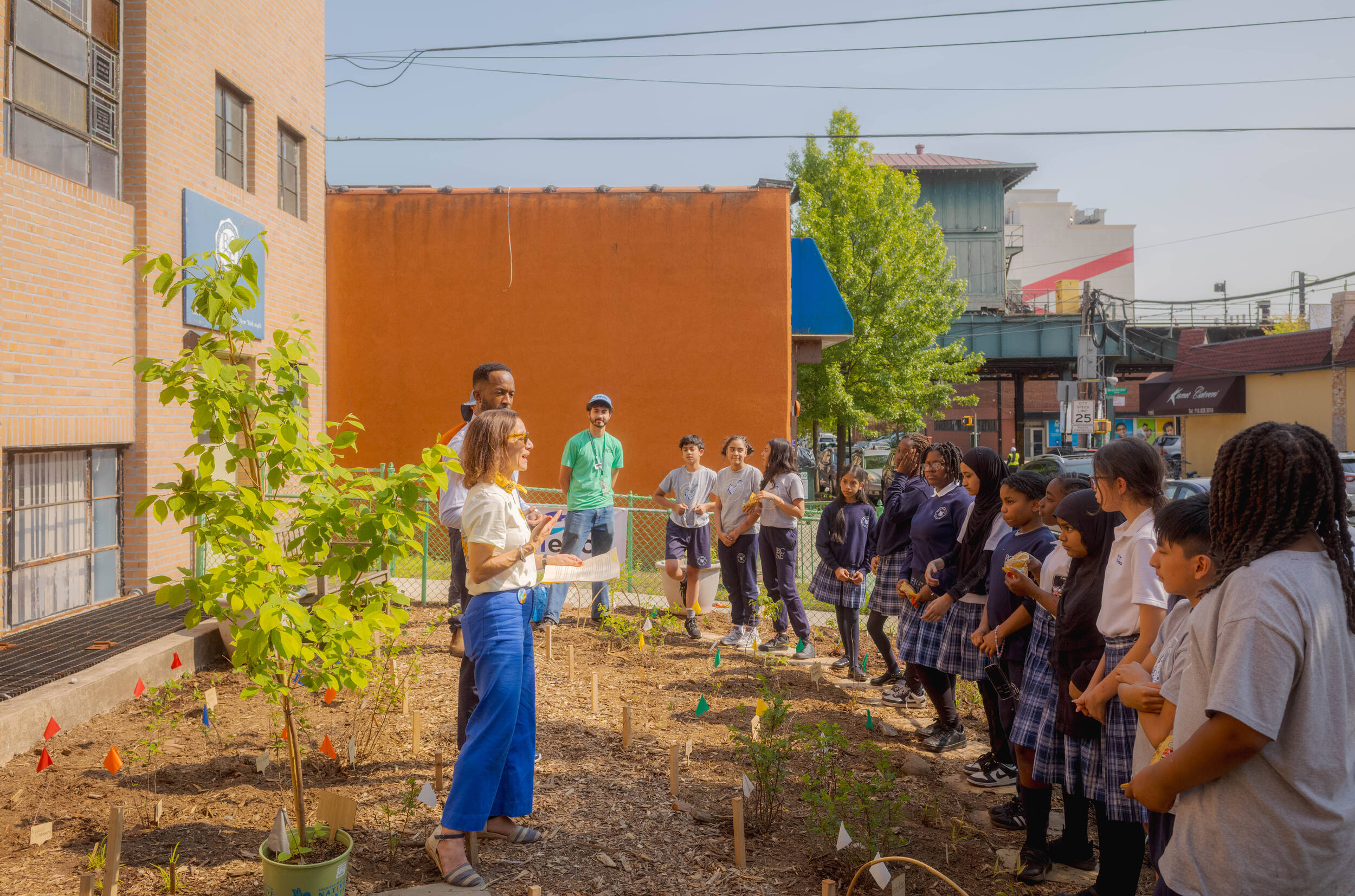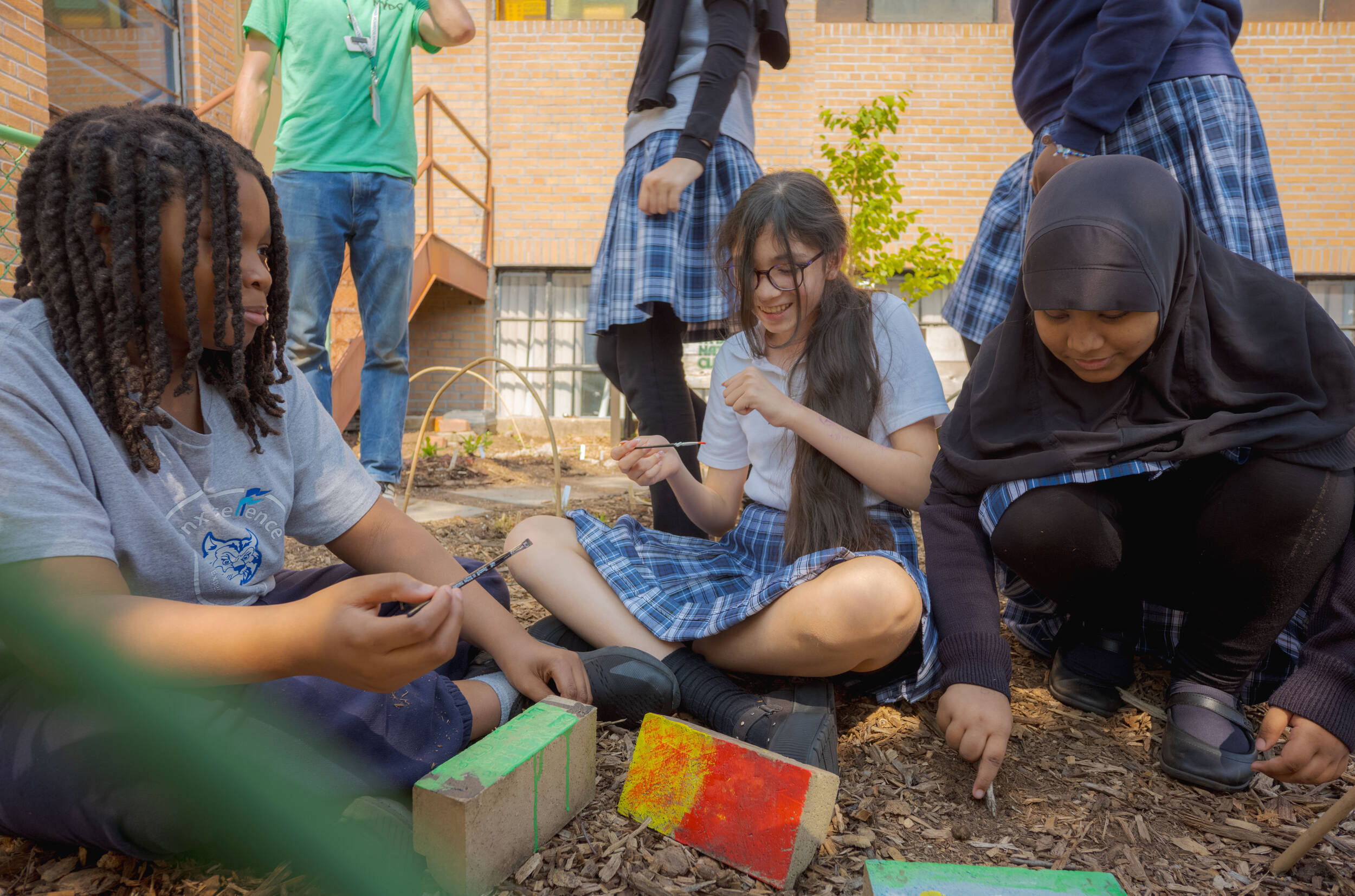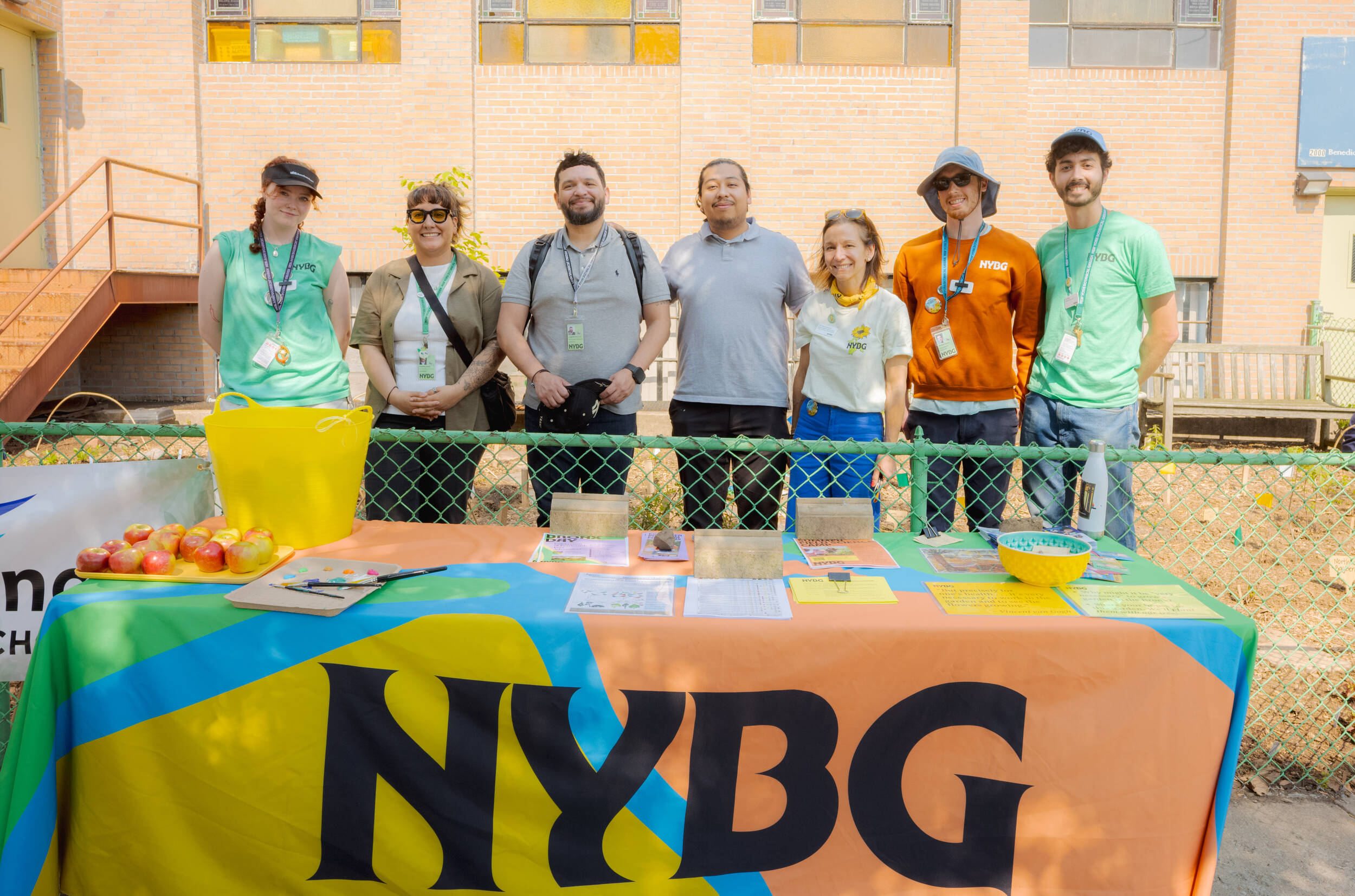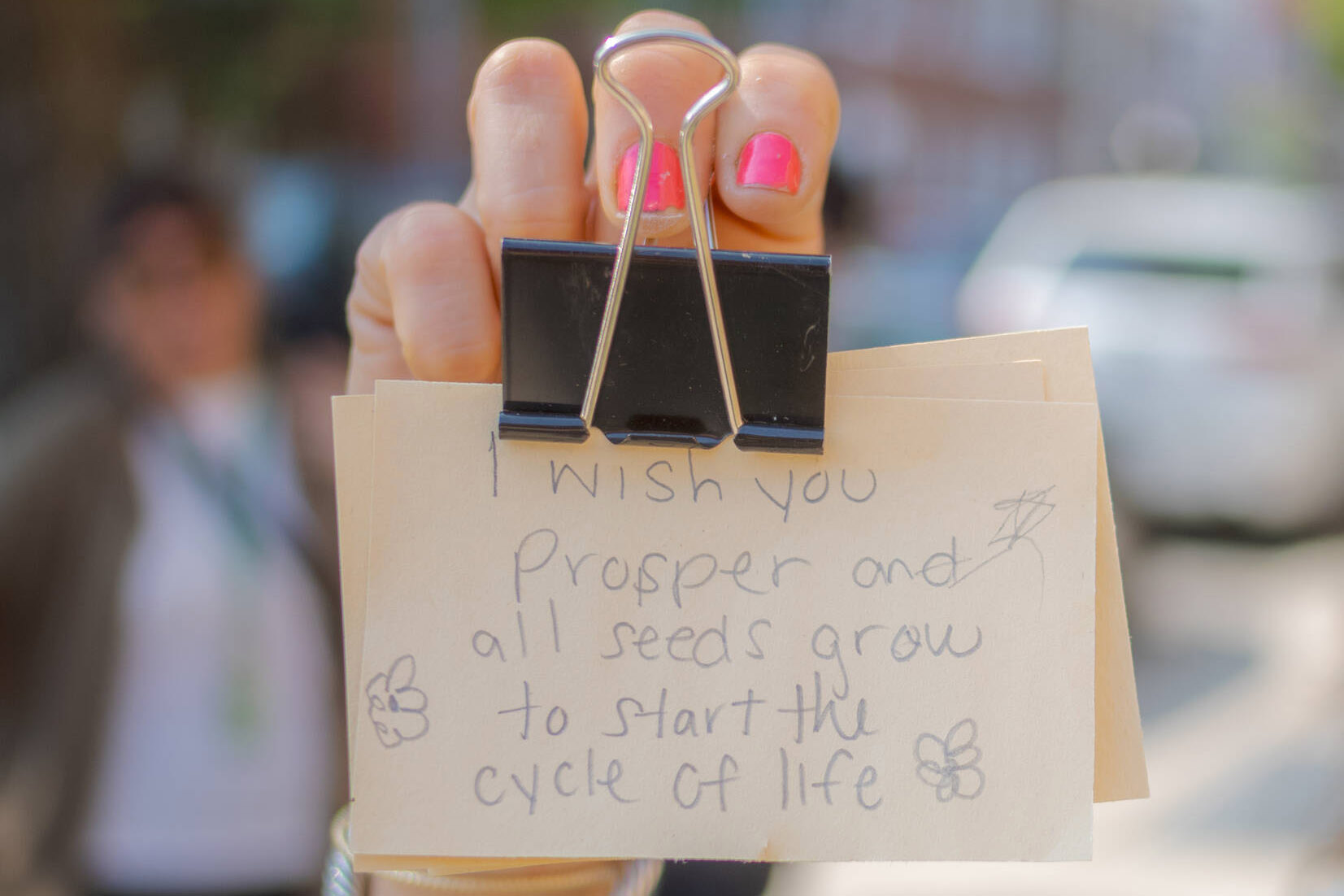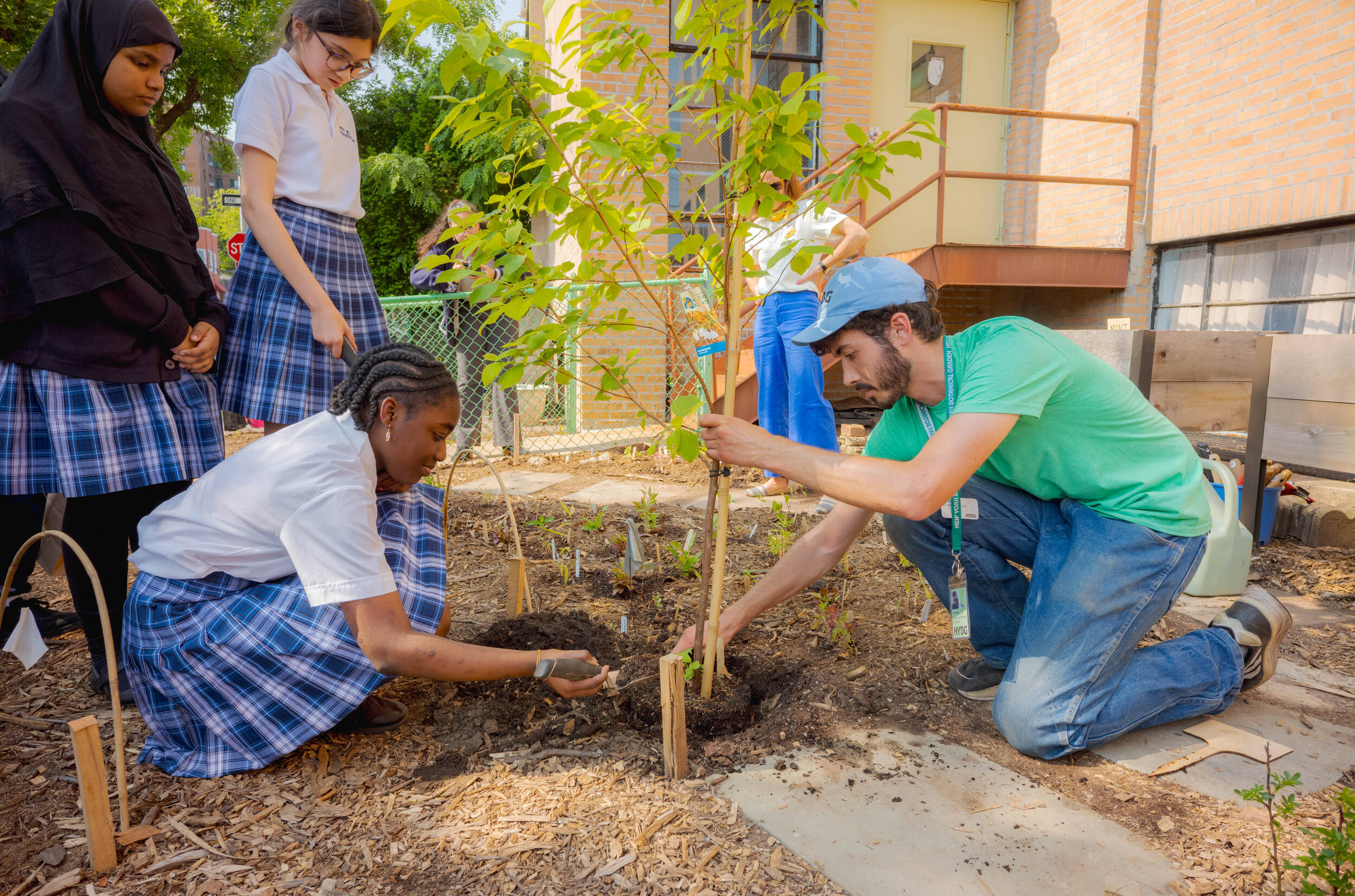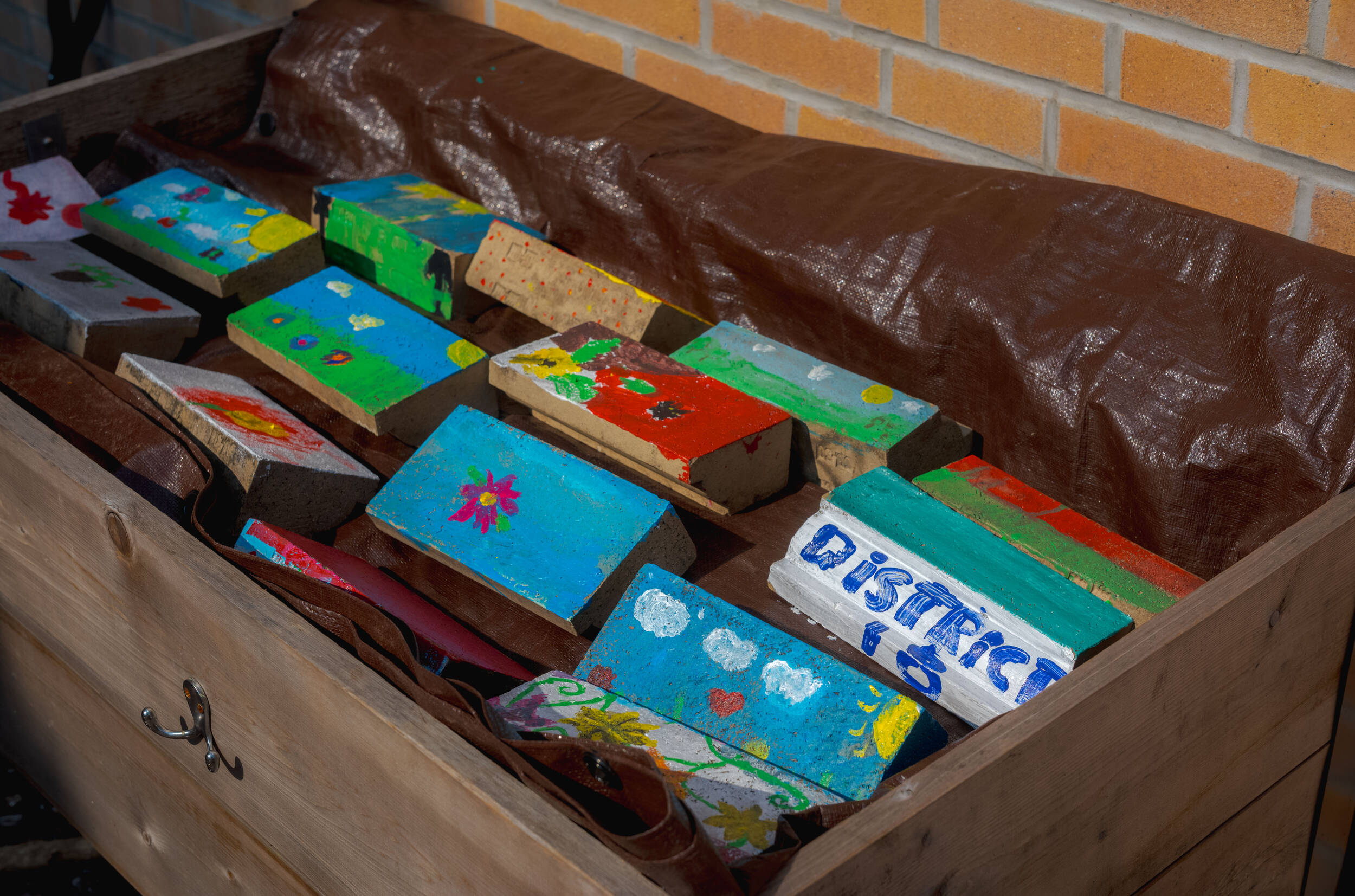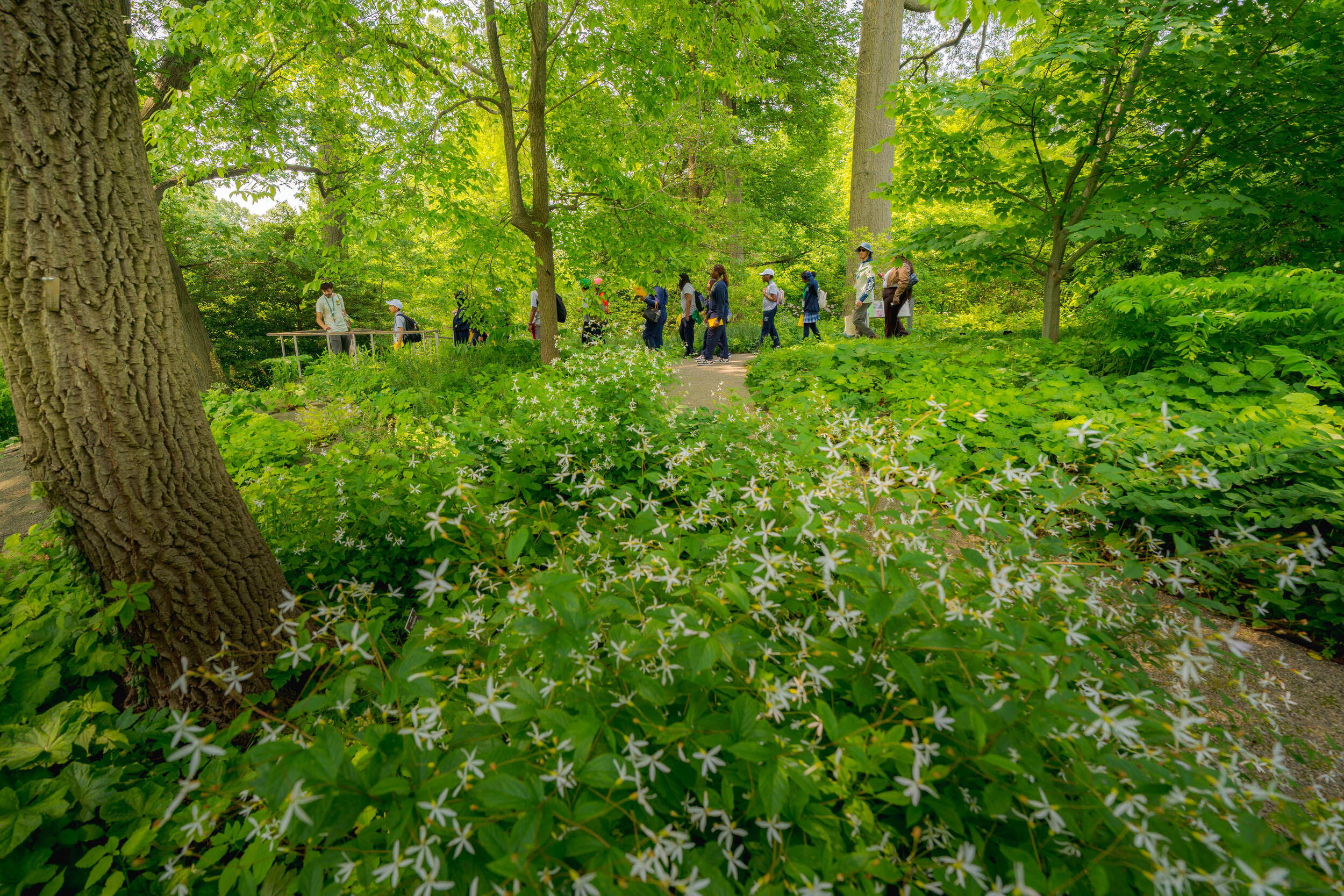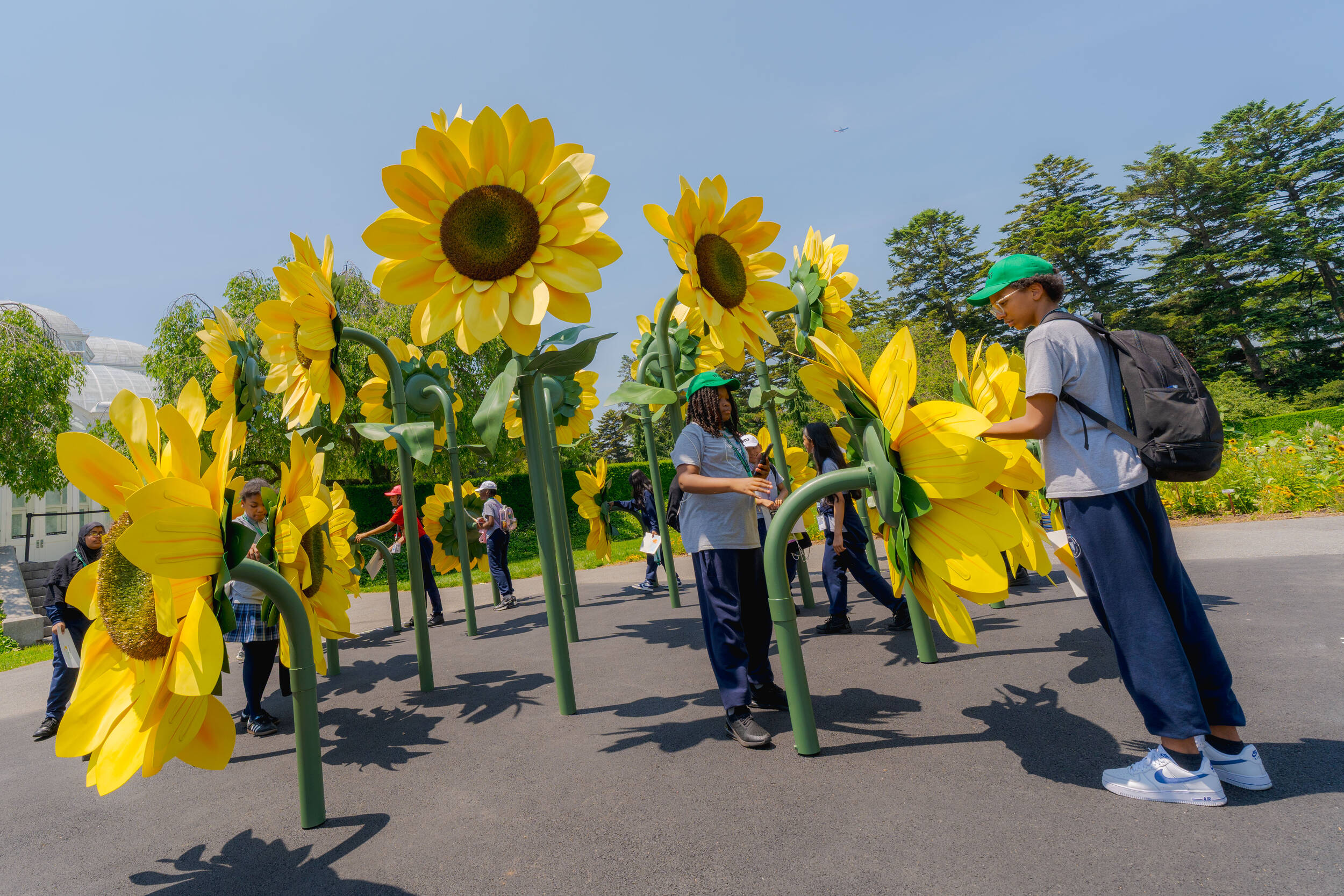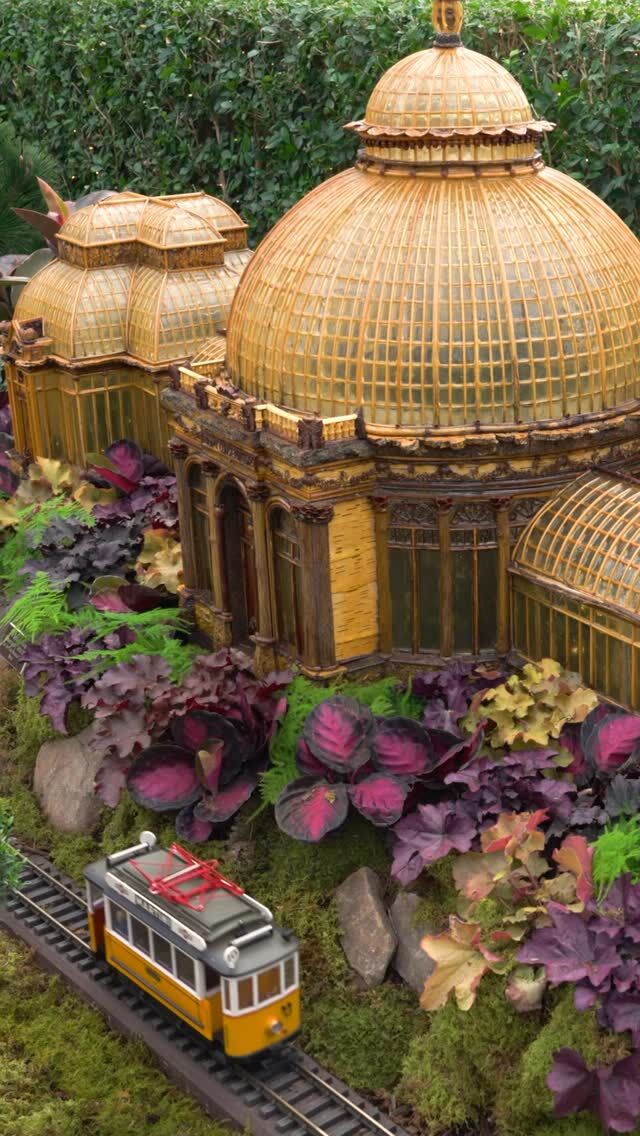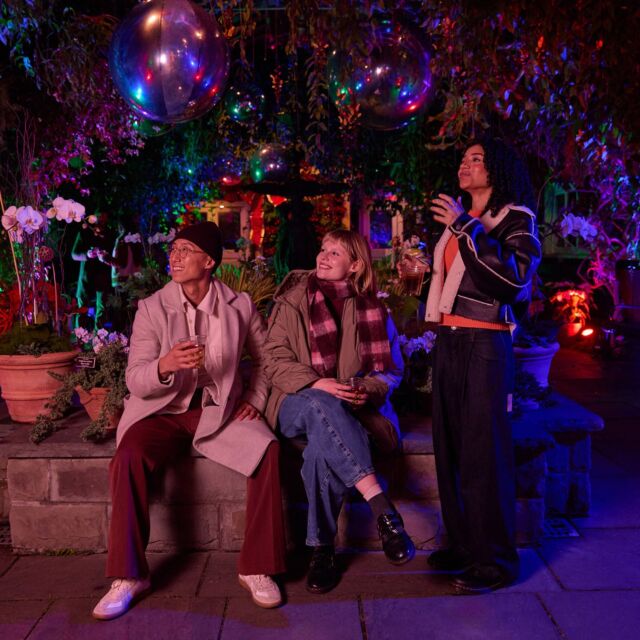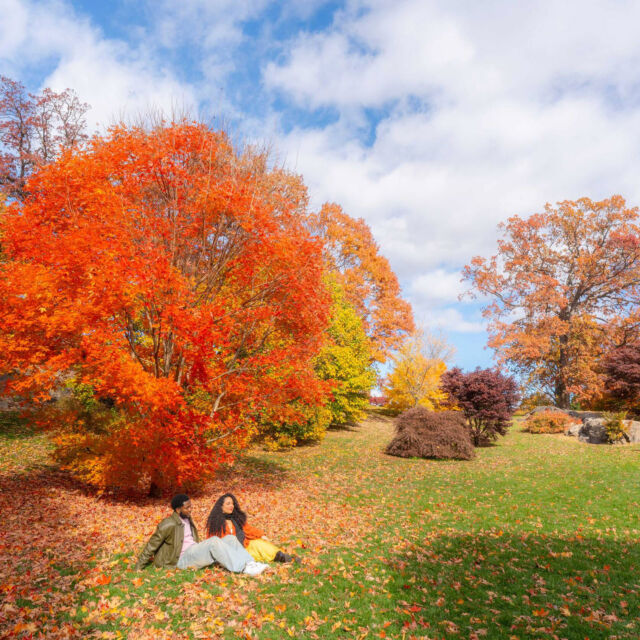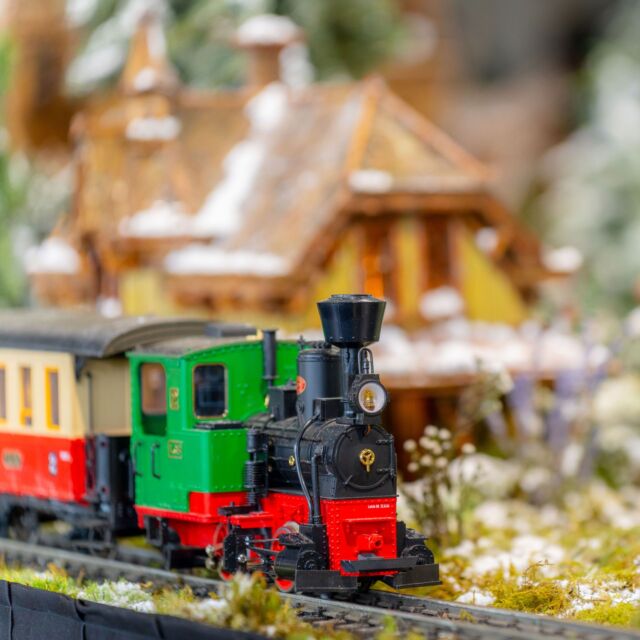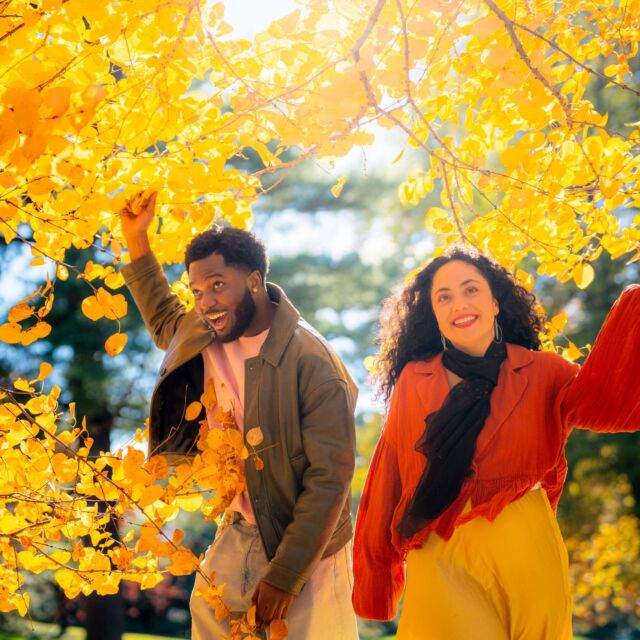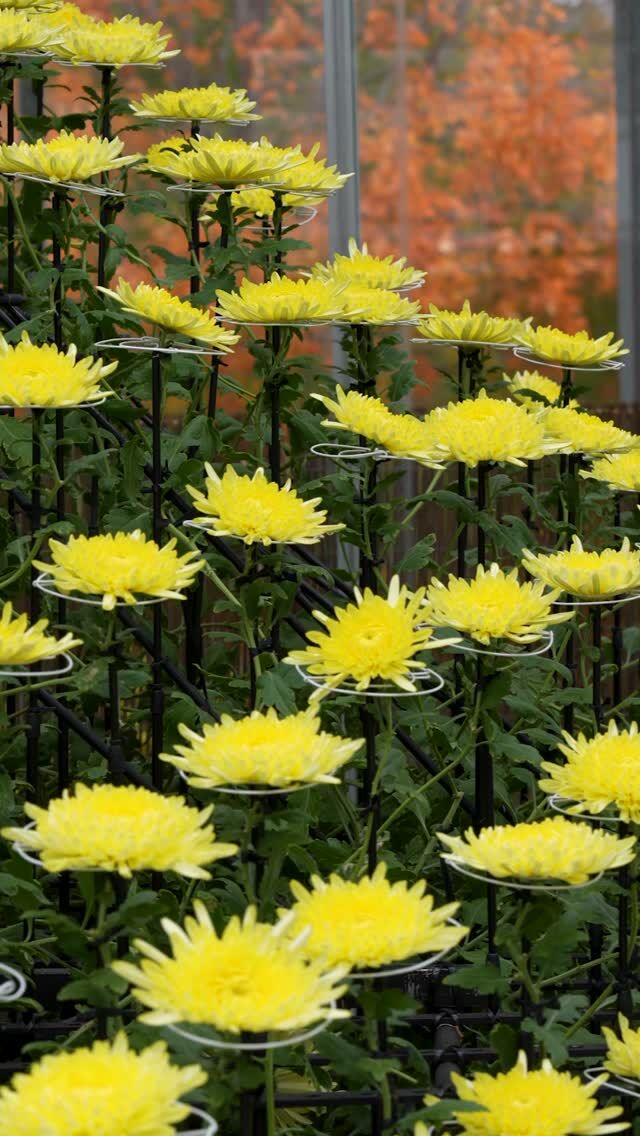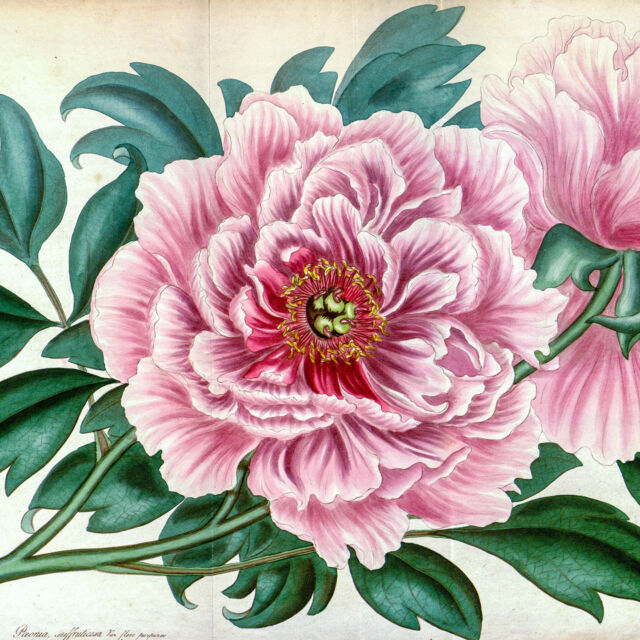More Than Flowers: GreenSchool and Cultural After-School Adventures Grow a Climate-Smart Garden
Tai Montanarella is the Marian S. Haskell Associate Director of School and Out-of-School Programs.
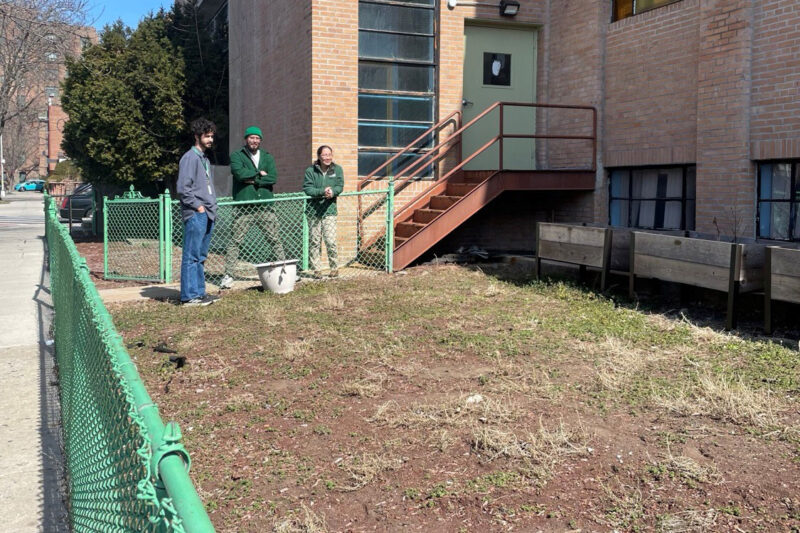
Surveying the garden: Staff from NYBG’s GreenSchool and Bronx Green-Up assess the garden space before its transformation.
In May, The New York Times hailed the opening of NYBG’s spring exhibition, Van Gogh’s Flowers, with the headline, “To Bring Van Gogh to Life, They Just Needed Sunflowers.” Already a blockbuster in its first month, the exhibition—rooted in Vincent van Gogh’s iconic work—is expected to draw more than half a million visitors to our 250-acre campus before it closes in the fall.
Just four miles away, at Bronx Charter School for Excellence 1, a much smaller garden quietly made its debut—celebrated with less fanfare but no less impact. To bring this 800-square-foot garden to life, NYBG needed something different: a community—and 31 species of nearly 300 native plants. Like Van Gogh’s Flowers, the Native Plant Habitat Garden will soon burst into color. But rather than drawing its inspiration from art, it’s grounded in the natural ecology of the Bronx, restoring plant communities that once flourished in this urban landscape.
- Students paint bricks of dreams to form the foundation of the Native Plant Habitat Garden.
- Past and Present: Inspired by Vincent van Gogh experiences, students explore the link between art and gardens.
- Tai Montanarella, Patrick Maynard, and Uri Sarig welcome the school community.
Built by 6th and 7th graders in the Cultural After School Adventures (CASA) NYBG Nature Club, this garden—once a patch of grass and weeds—isn’t just for people; it’s designed with nature in mind. Its purpose is to support pollinators, birds, and small mammals essential to healthy ecosystems. Of course, the students hope visitors will come, but their greater goal is to welcome the wildlife that makes urban nature possible, even in the most challenging environments.
This schoolyard garden directly connects students to NYBG’s broader mission to protect and care for Earth’s biodiversity, particularly through the Bronx River Watershed Health + Resilience Program. This program leverages NYBG’s expertise in Science, Horticulture, and Education to support community partners and land stewards dedicated to the river’s health and the well-being of those it touches. CASA participants will study the site over time, observing and recording wildlife interactions and gaining hands-on experience in ecological stewardship after their regular school day ends.
- Angel Hernandez, NYBG Government and Community Relations, and Marco Luna, Assistant Director of Constituent Services for Majority Leader Amanda Farias (District 18), with Caitlin O’Donoghue, Genesis Abreu, Tai Montanarella, Michael Green, and Uri Sarig.
- Community members share messages of hope to plant with a new tree.
- Planting the Caroline Silverbell (Halesia carolina) with handwritten messages of hope.
Joining the opening celebration were Genesis Abreu, Director of Urban Conservation Partnerships, and Ursula Chanse, Senior Director of Bronx Green-Up, NYBG’s community gardening outreach program. Both collaborated on the new Eco-Gardening Certificate course, part of the Bronx River Watershed Program, led by Bronx Green-Up’s Community Horticulturist, Jason Bonet. They supported the Native Plant Habitat’s construction and praised the space as an outdoor classroom for students, future scientists, and neighborhood gardeners focused on nature-based solutions for climate resilience.
“Native plant gardens play a vital role in strengthening the health and resilience of the Bronx River Watershed—especially when led by young people. By filtering polluted runoff, reducing erosion, and absorbing stormwater, they help protect the river from the impacts of urban development. When young people take the lead in designing, planting, and maintaining these spaces, they not only learn hands-on environmental skills—they also become powerful stewards of their community and advocates for a healthier, more sustainable Bronx River.”
–Genesis Abreu, Director of Urban Conservation Partnerships
Many of the plants are included in climate adaptation research by NYBG Assistant Curator Evelyn Beaury. Her team’s “Research to Practice” paper, Climate-Smart Gardening 2.0, compiles native and near-native plants likely to thrive in the Northeast’s changing conditions. We plan to observe the plants in the garden that overlap with species in the study that are predicted to fare well with climate change, and aim to integrate student research in collaboration with NYBG.
- Bricks painted by participants will add color and energy to the garden space.
- The journey continued the following day. The Nature Club students discover biodiversity in NYBG’s Native Plant Garden.
- While exploring art and nature, students reflect on Van Gogh’s botanical inspiration during their visit.
NYBG echoes a timeless sentiment from Vincent van Gogh, who wrote in 1888, “But precisely for one’s health, as you say—it’s very necessary to work in the garden and to see the flowers growing.” While we advance ecological health through biodiversity, there’s always space in a garden for human well-being and creativity. At the Native Plant Habitat Garden opening, visitors helped plant a native tree, penned their hopes for the space, and repurposed NYBG bricks—painting personal meaning and vibrant, colorful expressions of community into its paths.
“Thanks to this collaboration for the past two years, I’ve watched students grow as interim community botanists. They are doing meaningful work by bringing nature into their neighborhood and making a difference in their community. Their dedication and impact have been truly remarkable.”
–Patrick Maynard, Bronx Excellence 1 Science Teacher and CASA Liaison
Now in its third year at Bronx Excellence I, CASA is sponsored by City Council District Leader Amanda Farias (District 18), and proudly funded through NYBG’s Government and Community Relations. The 2025 CASA partnership was facilitated by School and Out-of-School Program Coordinators Uri Sarig and Michael Green, with assistance from GreenSchool Educators Rosa Karim, Lauren Gill, and Science Education Intern Caitlin O’Donoghue. Special thanks to NYBG Operations for the upcycled bluestone and bricks.
SUBSCRIBE
Enter your email address to subscribe to this blog and receive updates on new posts.
